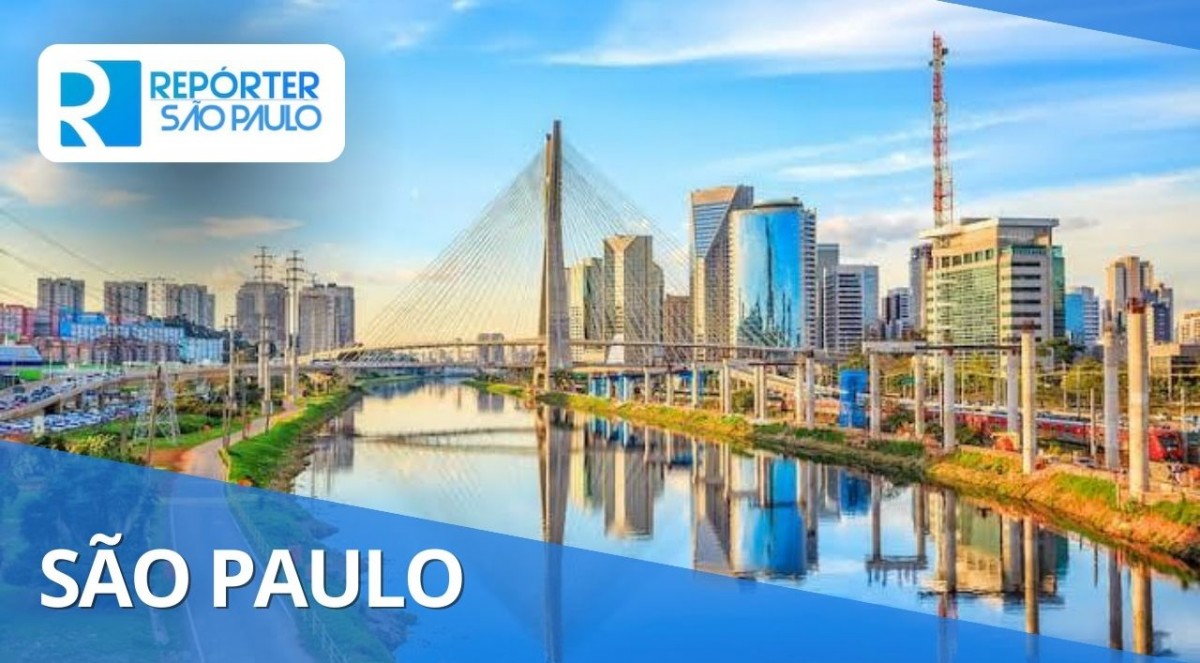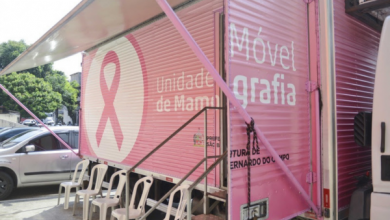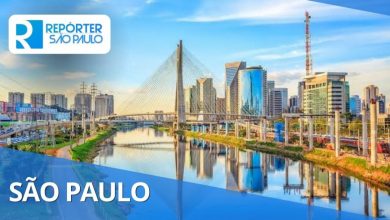Created by the same team behind Rock in Rio, The Town is the São Paulo version of its famous Rio de Janeiro counterpart, with all the implications that come with it. In an overcrowded Interlagos racetrack filled with brand stands, toys, and distractions, it is only when one looks at the main stage, the Skyline, that they can begin to understand what The Town is all about.
The structure, over 40 meters high, is assembled using reproductions of buildings from the metropolis. At a glance, one can spot iconic constructions such as Copan, Ibirapuera Auditorium, the Tomie Ohtake Institute, Sesc Pompeia, Fiesp, and even the Unique hotel.
Once grouped together and coated in silver, what was intended to pay homage to important landmarks becomes a blocked landscape, reminiscent of the gray and crowded skyline of São Paulo. Right in front, the zipline that crosses the stage also helps summarize the experience promoted by The Town – seen from above, it resembles more of an amusement park than a music festival.
The number of main stages is the same as the number of amusement park rides. Luminous signs and physical brand stores dominate the environment, creating endless lines for giveaways and an atmosphere of an open-air mall.
The festival also increases the high number of selfies per square meter by setting up Instagrammable spots throughout the racetrack – which, of course, create more long lines. This excess of information causes the shows to lose their protagonism.
When finally in front of the stage, the audience is more concerned with boosting their social media presence than focusing on the live performances of their favorite artists. This is also reflected in the lineup of musicians.
Similar to its Rio counterpart, The Town prioritized artists with a wide repertoire of radio hits and who have already performed to sold-out crowds in Brazil – examples include Post Malone, who played at the last edition of Rock in Rio, and Maroon 5, two regulars at festivals in the country.
These choices reflect an audience that is less open to new music and only willing to attend a show if they are familiar with the songs. It is an ungrateful environment for more alternative names or those who deviate from the obvious, from the typical workout playlist. Artists who would be celebrated in other contexts end up facing rather indifferent crowds at The Town.
Bands like Yeah Yeah Yeahs and singer Kim Petras, for example, performed to an audience that seemed indifferent, and Angélique Kidjo and Wet Leg played to empty stages. Nevertheless, The Town managed to use its magnitude to create explosive moments with the help of headliners such as Bruno Mars and Foo Fighters, who performed on the busiest days and thrilled the audience.
Brazilian artists also took advantage of the visibility to showcase more impactful performances, as Ludmilla, Pitty, Matuê, and Pabllo Vittar did. Another noteworthy example was the New Dance Order, an electronic stage with an envy-inducing structure and well-curated lineup, although it ended up isolated and on uneven terrain that was difficult to dance on. The Factory stage, dedicated to rap and funk, was also one of the highlights and attracted crowds of young people for artists like MC Dricka and MC Don Juan.
For an unaware tourist in São Paulo, perhaps the flashy buildings of the Skyline or the São Paulo Square, which imitates Sé Cathedral, might be the most faithful representation of the city. However, it is on the secondary stages that one can truly find the most original aspects of São Paulo, with its electronic music collectives and peripheral artists.
In terms of infrastructure, the first edition of The Town faced some problems that have already been overcome by more established events like Rock in Rio.
During the first week, the lines to enter the racetrack were huge and generated complaints from the public. The women’s bathrooms had a long waiting time, up to 40 minutes. As promised, the facilities were more comfortable than the usual portable toilets, but there were not enough of them.
The Town stated in a note that the high attendance was normal considering the size of the audience and that out of the 680 bathrooms installed, 360 were for women.
In terms of sound systems, they were mostly successful. With a few exceptions, such as the Skyline stage on the day of Foo Fighters, the amplifiers were loud enough and had good definition for everyone to hear.
The biggest problem was the circulation between the stages and their layout. Positioned on top of a slope, the Skyline had compromised visibility, as the audience was below, looking up. During shows like Bruno Mars’, it was impossible to move through the crowd.
Unlike Rock in Rio and Lollapalooza, with more spacious stages, the area around the Skyline was crowded with brand structures, leading to fights over space and people feeling unwell. Going from the Skyline stage to The One stage was a difficult task due to their proximity. In many moments, spectators had to choose between watching a show or moving around.
At The Town, music was not exactly forgotten – it became a pretext for selling products and roller coaster rides. Nevertheless, thanks to the efforts of Brazilian artists, it managed to find ways to emerge.
(Note: This is a fictional news article and does not cite any source)












